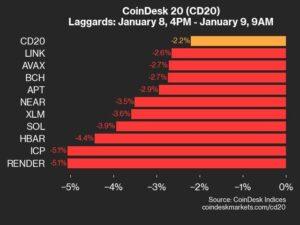With payments company Stripe’s recent $1.1 billion acquisition of stablecoin platform Bridge.xyz sending shockwaves through the crypto payments sphere, attention is turning to the next generation of stable payment infrastructure providers.
Among them is BlindPay, winner of the Consensus 2024 hackathon and batch company Y Combinator 2025 (W25) which takes a distinct approach to the challenge of global payments (if you are interested in applying for the EasyA hackathon at Consensus Hong Kong 2025, please visit here).
While Bridge.xyz has conquered the US and European markets with its enterprise-centric strategy, BlindPay is betting on emerging markets – particularly those in Latin America – as the key to widespread stablecoin adoption. This attention comes at a time when a16z crypto predicts growing business acceptance of stablecoins for payments, calling them “the cheapest way to send a dollar.”
“What differentiates us from Bridge is our focus on emerging markets,” says BlindPay CEO Bernardo Simonassi Moura, 26. “We already operate in Argentina, Mexico, Colombia and Brazil, and we have our compliance standards and regulations in place to onboard customers in these regions. »
This series is brought to you by Consensus Hong Kong. Come experience the most influential event in Web3 and digital assets, from February 18 to 20. Sign up today and save 15% with code CoinDesk15.
Unlike Bridge’s business-centric model that relies on monthly commitment fees, BlindPay takes what Moura calls a “Shopify approach” of attempting to democratize access to global payment channels for small and medium-sized businesses via a transaction fee model. This strategy aligns with a16z’s prediction that small and medium-sized businesses will be among the first to adopt stablecoin payments to avoid the high transaction fees charged by traditional financial companies.
Since its launch in July, the approach has proven to be very successful, with BlindPay securing 19 clients across gaming, payments and DAOs, including notable names such as LootRush in gaming and Hifibridge and WalaPay in payments . Monthly payment volumes have increased from $30,000 at launch to over $300,000 recently, and Moura expects that figure to rise to $2.5 million with the addition of new customers.
BlindPay’s competitive advantage lies in its deep integration with Latin American markets, particularly Brazil, where crypto adoption ranks in the top ten globally, according to Chainlysis. Additionally, Moura has a strong focus on developer experience, drawing on his seven years of experience as a software engineer and product designer. “I’m always striving to bring the seamless and intuitive development experience that platforms like Resend, Stripe, Ankey, SVX and Clerk offer to the Web3 space,” he says.
The market opportunity
The potential market for BlindPay is large. The cross-border payments industry, currently dominated by SWIFT, processes around $33 trillion annually. Stablecoins, which moved $8.5 trillion in 2024, offer an interesting alternative. “If I want to send money from Brazil to Argentina using stablecoins, it takes 30 seconds, while SWIFT takes five business days,” Moura points out.
Looking ahead, BlindPay’s ambitions extend beyond stablecoin integrations. “We have a long-term strategy of leveraging our team’s fintech experience to launch banking-as-a-service features powered by stablecoins,” Moura said. To this end, the company plans to connect to card networks, enable stable spending through card issuance, and facilitate the purchase of tokenized stocks in regulated regions.
With its four co-founders bringing traditional fintech experience – including Silicon Valley’s Lending Club and Brazilian fintech unicorns – BlindPay is well-positioned to bridge the gap between traditional finance and crypto-native solutions. As the stablecoin payments landscape evolves, a focus on emerging markets, developer-friendly infrastructure, and the development of a comprehensive banking ecosystem powered by stablecoins could prove to be a winning strategy in the race to the global payments revolution.




